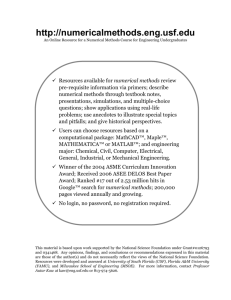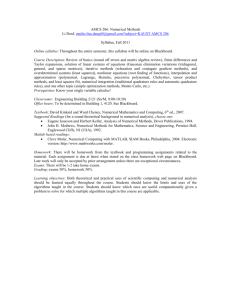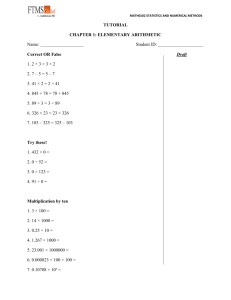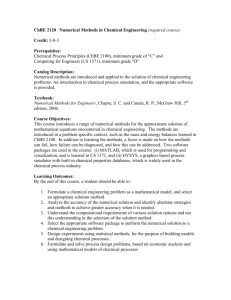postpubli02
advertisement
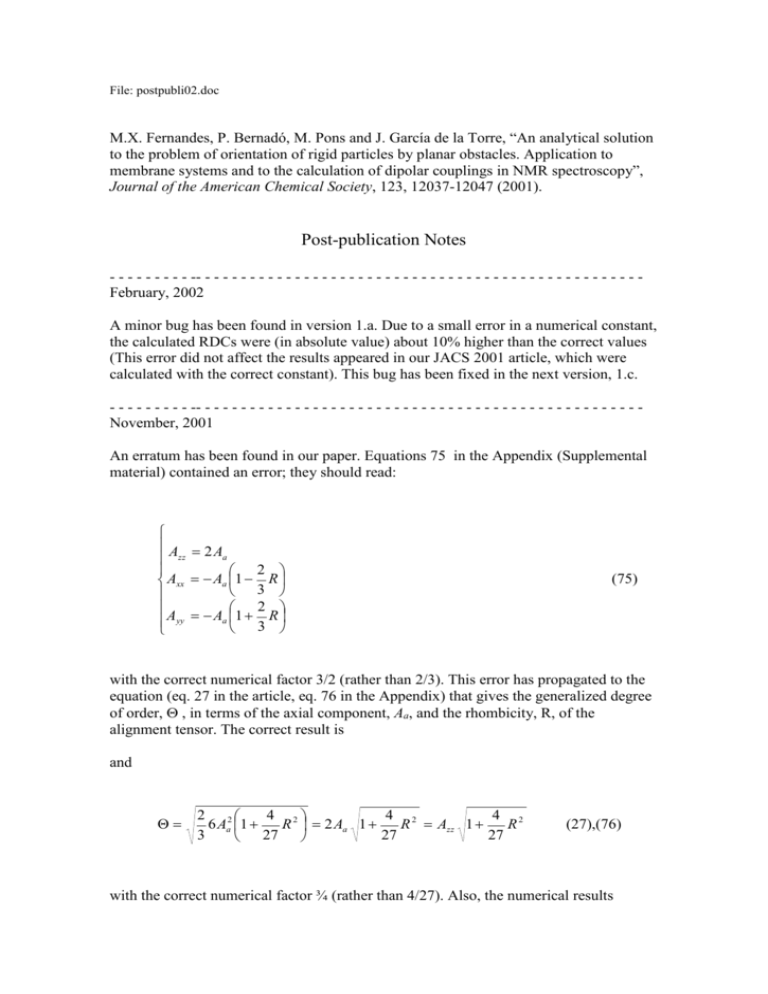
File: postpubli02.doc M.X. Fernandes, P. Bernadó, M. Pons and J. García de la Torre, “An analytical solution to the problem of orientation of rigid particles by planar obstacles. Application to membrane systems and to the calculation of dipolar couplings in NMR spectroscopy”, Journal of the American Chemical Society, 123, 12037-12047 (2001). Post-publication Notes - - - - - - - - - -- - - - - - - - - - - - - - - - - - - - - - - - - - - - - - - - - - - - - - - - - - - - - - - - - February, 2002 A minor bug has been found in version 1.a. Due to a small error in a numerical constant, the calculated RDCs were (in absolute value) about 10% higher than the correct values (This error did not affect the results appeared in our JACS 2001 article, which were calculated with the correct constant). This bug has been fixed in the next version, 1.c. - - - - - - - - - -- - - - - - - - - - - - - - - - - - - - - - - - - - - - - - - - - - - - - - - - - - - - - - - - - November, 2001 An erratum has been found in our paper. Equations 75 in the Appendix (Supplemental material) contained an error; they should read: A 2A a zz 2 Axx Aa 1 R 3 2 Ayy Aa 1 3 R (75) with the correct numerical factor 3/2 (rather than 2/3). This error has propagated to the equation (eq. 27 in the article, eq. 76 in the Appendix) that gives the generalized degree of order, , in terms of the axial component, Aa, and the rhombicity, R, of the alignment tensor. The correct result is and 2 2 4 2 4 2 4 2 6 Aa 1 R 2 Aa 1 R Azz 1 R 3 27 27 27 (27),(76) with the correct numerical factor ¾ (rather than 4/27). Also, the numerical results in the original Table 1 of the Appendix are incorrect. The correct values are: Table 1. Contribution of the rhombicity to the generalized degree of order R 1 4 2 R 27 0.2 0.3 0.4 0.5 0.6 1.003 1.007 1.012 1.018 1.026 Fortunately equation 27 is not used in the calculation, and therefore none of the results reported in the article is affected. Equation 27 was formulated just to show that the effect of rhombicity on the degree of order is rather small. The correct values, although they are slightly higher than those previously reported, still lead to this conclusion: the effect of the usual values of rhombicity on is of a few percent. We are grateful to Dr. J. Santoro for bringing this error to our attention.





